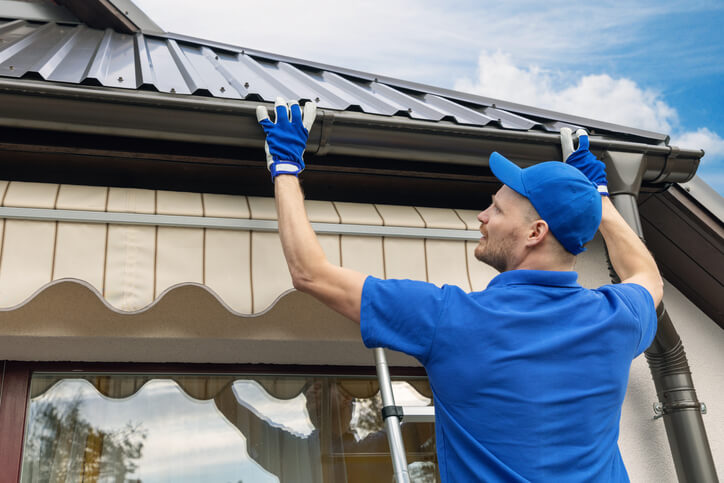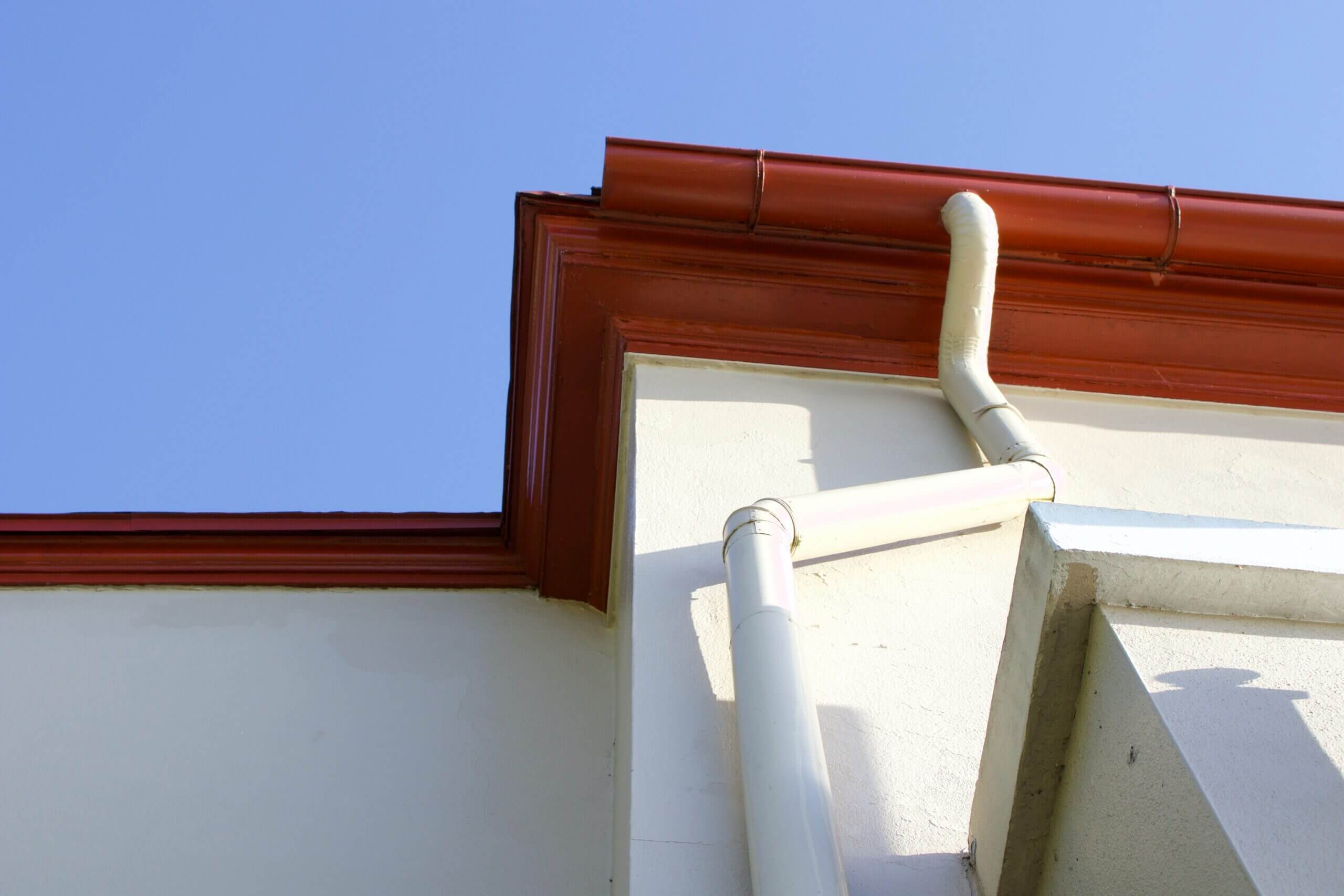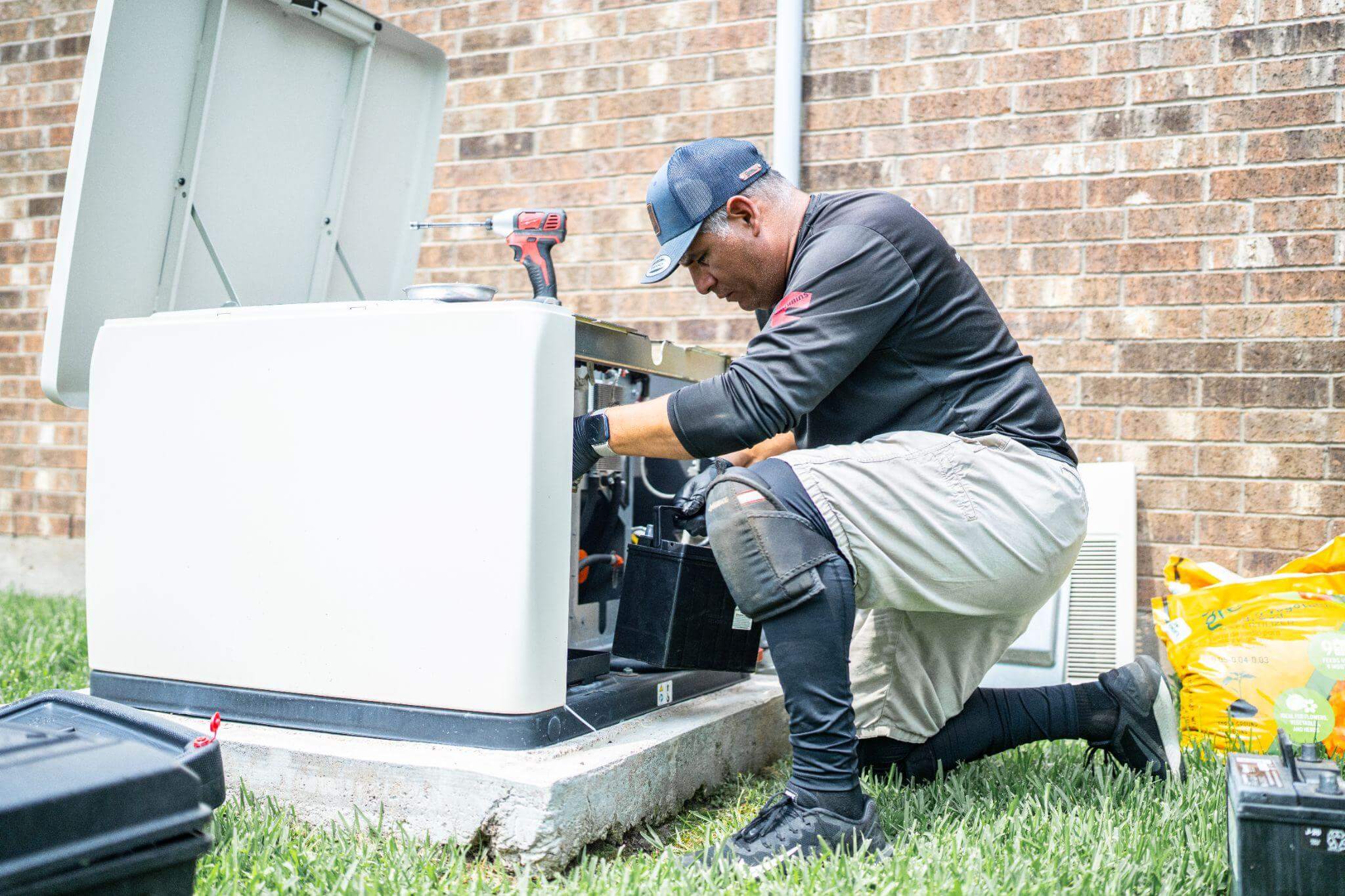Are you doing a gutters project?
Modernize can pair you with three to four pros in your area, so you can compare options and save time and money.
Assessing the Difficulty of DIY Gutter Installation
Homeowners can realize substantial cost savings with DIY gutter installation, but it’s not a job everyone can handle. DIY gutter installation requires familiarity with many different types of hand tools; experience working at height on ladders, precise measuring, and cutting gutter sections; and the ability to lift and hang long lengths of gutters. The difficulty of these tasks is compounded by homes with tall and complex rooflines and second-story residences.

Some of the tools required for DIY gutter installation include:
- One or more extension ladders
- Tape measure, chalk line, and 4- or 6-foot level
- Caulking gun
- Tin snips, hacksaw, and miter saw with metal-cutting blade
- Cordless drill or impact driver
Protective gear such as safety glasses, gloves, and sturdy shoes is also highly recommended.
Planning and Preparation
A successful DIY gutter installation project requires careful planning.
Choosing the Right Type and Style of Gutter
Knowing what type of gutter material you want to install is a good first step. Professional gutter companies often specialize in installing seamless aluminum gutters that are roll-formed on-site to the exact measurements of the roofline. Gutter fabrication is not really an option for homeowners, so you’ll have to purchase sectional gutters sold in pre-manufactured lengths and cut sections to fit as needed. The most popular choices for DIY gutter installation are aluminum and vinyl. Stainless steel gutters are heavy and difficult to work with, and copper gutters are extremely expensive and best left for professional gutter installers.
You’ll also have to choose a gutter style — K-style and half-round are the most common shapes. For a gutter replacement, you can simply match the existing style or match the style of neighboring homes. As a rough rule, K-style gutters are more appropriate on contemporary architectural styles, while half-round gutters are the best option for older homes.
Choosing the Right Size of Gutter
You’ll need to choose a gutter size. The most common sizes are 5-inch or 6-inch gutters. If it rains a lot where you live, go with the larger size to handle a greater amount of stormwater.
Measuring and Planning for Gutter Installation
Accurate measurements of your roofline are essential for ordering the right amount of materials.
Gutters always attach to the flat sections of the roof fascia — never to the angled parts. To measure for materials, you can take measurements from the ground. Simply hook one end of your tape measure to a corner of the building and measure the span where the gutter will hang. If your tape measure doesn’t reach the entire distance, mark the 25 or 30-foot point with a pencil or chalk, reset, and continue measuring from that spot.
Next, add up all your measurements to determine the total linear feet of sectional gutters needed. Sectional gutters and downspouts typically come in 10-foot lengths, with 2″ to 6″ of overlap at each joint. You’ll also need to measure for downspouts. As a general rule, you’ll need one downspout every 30 to 40 feet. This typically places a downspout at each end of a longer gutter section and at one end of shorter sections.
Find the Right Contractor for Your Gutters Project
Whether you’re ready to begin your project now or need some expert advice, our network of contractors are here to help. With a few simple questions, we’ll find the best local professionals for you
Finally, don’t forget to account for the required end caps, drop outlets, elbows for the downspouts, inside and outside corners, and fascia brackets for attaching the gutters to the roofline.
Step-by-Step Installation Guide for DIY Gutters
Once you’ve gathered all your materials from a home improvement store, you’re ready to begin.
1. Layout Gutter Sections on the Roof Fascia
Start by marking where each gutter section will hang on the fascia board. Gutters should have a ¼” vertical drop for every 10 feet to avoid standing water. Use a chalk line to ensure the gutters are sloped correctly toward the downspouts.
2. Install Fascia Brackets
After snapping your layout lines, install fascia brackets on every other rafter tail. Look for galvanized nails that carpenters used to attach the fascia to the roof trusses or rafters. By skipping every other rafter, you create a 48” layout (since rafters are spaced 24” apart). In areas with heavy rain and snow, add extra brackets for additional support.
3. Measure and Cut Gutters
While you’ve estimated gutter lengths, use a ladder to take precise measurements on the roof fascia. This ensures you get the exact length for each section. Pre-assemble longer gutter sections on the ground, including corners, drop outlets for downspouts, and end caps.
Pro Tip: Use the buddy system when measuring and hanging gutter sections. An extra set of hands will save time and simplify the process.
How Much Do DIY Gutters Cost
Costs for DIY gutters depend on the type, style, and size of the gutter, as well as the total amount of gutter material you need.
- Aluminum gutters cost between $5–$10 per linear foot
- Vinyl gutters cost between $4–$7 per linear foot
Additional accessories for a complete gutter system are priced by the piece, which varies by distributor and type of material.
With DIY gutter installation, 1,000 linear feet of aluminum gutter could cost between $500–$1,000, with approximately another third of that number for additional accessories. Professional gutter installation, meanwhile, costs an average of $2,350.
Putting it all together
DIY gutter installation is a good way to save money versus professional gutter installation, but it’s a complicated job and may not be suitable for every homeowner. Planning and preparation, along with extensive familiarity with hand tools and working at heights, are essential to getting the job done right.
Frequently Asked Questions About DIY Gutter Installation
Find the Right Contractor for Your Gutters Project
Whether you’re ready to begin your project now or need some expert advice, our network of contractors are here to help. With a few simple questions, we’ll find the best local professionals for you
Reviews from Real Homeowners
Welcome to Homeowner Resources! We are the Modernize blog. Modernize pairs more than 3 million homeowners a year with pre-vetted contractors in their area. This blog started because we believe homeowners should know everything about their homes, from how their HVAC works to which front door colors they might love. On Homeowner Resources, you can find information on every part of your home, right down to how you can negotiate with contractors to get the best price. Here's more about the blog.
Need a contractor? Learn more about how Modernize finds the right pro for you.



